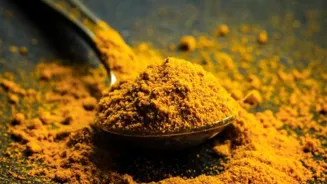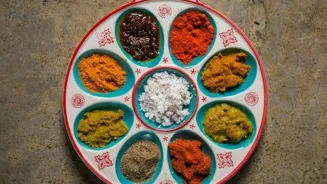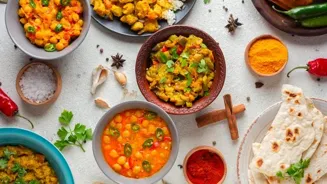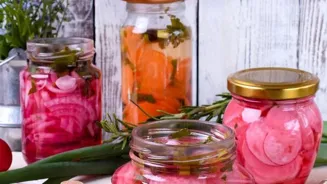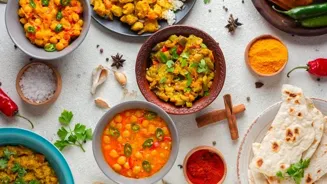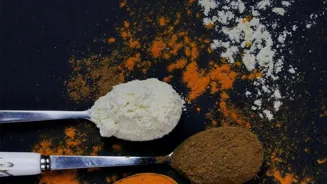Spice Up Your Life: 10 Desi Masalas to Revolutionize Your Cooking! From turmeric's health benefits to cardamom's aromatic sweetness, discover the magic of Indian spices here!
Spice Up Your Life: 10 Desi
Masalas That Will Revolutionize Your Roti-Subzi Game!
Discover 10 essential Indian spices for flavorful vegetarian cooking
Hey there, food lovers! Are you tired of the same old boring dishes? Do you dream of flavors so vibrant they make your taste buds dance? Well, ditch the bland and embrace the bold, because we're about to take you on a spice journey through the heart of India.
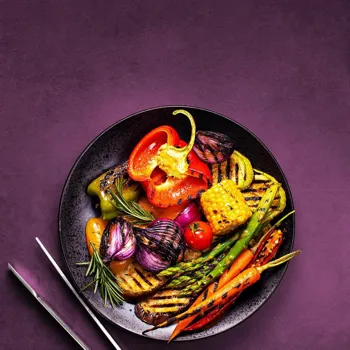
Forget those fancy imported herbs – we're talking about the real deal: the local masalas that have been passed down through generations, adding magic to every kitchen.
Prepare to discover the 10 must-have spices that will transform your cooking from "meh" to "marvelous," all while staying true to the delicious vegetarian traditions we all cherish.
Get ready to unlock a world of flavor so authentic, so aromatic, and so darn good, you'll wonder how you ever cooked without them!
Turmeric: golden spice with health benefits, adds warmth to dishes
First on our list is turmeric, or haldi, the golden child of Indian spices. This vibrant yellow powder is not just a pretty colour, it's a powerhouse of health benefits!
Turmeric is known for its anti-inflammatory properties and is packed with antioxidants, making it a delicious way to boost your immunity. In the kitchen, haldi adds a warm, earthy flavour to everything from dals and curries to vegetable stir-fries. A pinch while tempering dal elevates its taste.
Also, add it to warm milk with honey for a comforting night if you have sore throat.
Coriander seeds and fresh leaves vital in Indian cuisine
Now, let's talk about coriander, or dhaniya. In the Indian kitchen, we have two types of dhaniya - coriander seeds and fresh coriander leaves. Both are very essential in Indian cuisine. Coriander seeds have a citrusy with a mild sweet note.
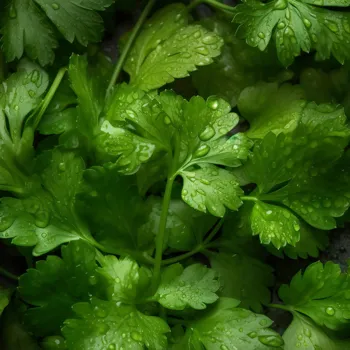
They're often roasted and ground into a powder, forming the base for several curries and spice blends. Toss them whole into hot oil to release their aroma before adding other ingredients, or sprinkle the powder over your dishes for a burst of flavour.
Fresh coriander leaves are the perfect way to brighten and freshen up any dish. They're added as a garnish to finish off curries, soups, and salads, adding a vibrant green touch and a refreshing zing.
Jeera enhances Indian dishes with warm, earthy flavor and aroma
Cumin or jeera, is another very important spice which is used almost daily. Jeera boasts a warm, earthy, and slightly bitter flavour that adds depth and complexity to many Indian dishes.
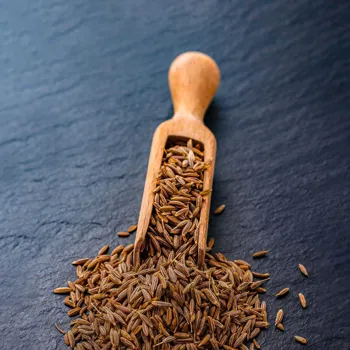
Whether used whole or ground, in various vegetarian dishes, jeera brings a unique flavour profile to dishes that is amazing and elevates aroma, taste and flavor. A simple tempering of jeera in oil before adding other ingredients is a common technique to infuse the entire dish with its aroma.
Roasted jeera also has a great aroma. A dash of jeera powder to curd turns it into a delicious raita.
Cardamom: versatile spice enhancing sweet and savory dishes
Then there is the king of spices, cardamom or elaichi. It is a spice that offers a unique sweet and fragrant flavor. Elaichi pods contain tiny black seeds; the entire pod can be used to infuse dishes with flavor, or the seeds can be ground into a powder.
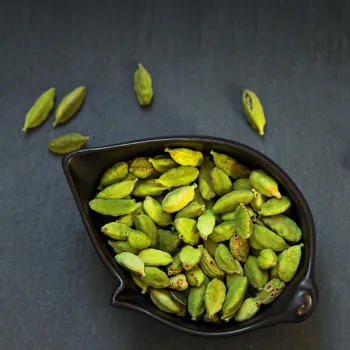
In Indian cuisine, elaichi finds its way into both sweet and savoury dishes. It is used to flavour desserts like kheer and halwa, adding a touch of exotic sweetness. But its aroma is not confined to sweets; it also elevates the flavour of biryanis, curries, and tea.
Its flavour profile is strong, so a little goes a long way. Adding a pinch of elachi to garam masala elevates its taste.
Dalchini adds warmth & sweetness to Indian dishes with distinct flavor
Cinnamon, or dalchini, adds warmth and sweetness to dishes. This aromatic spice is made from the inner bark of trees. Cinnamon sticks and cinnamon powder, are commonly used in Indian cooking, imparting a distinct sweet, woody flavour.
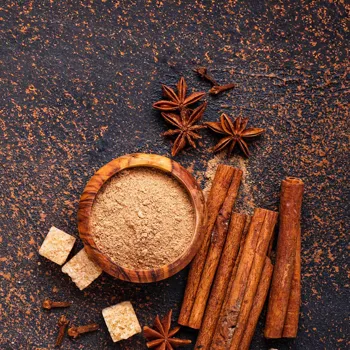
Dalchini is used in savoury dishes like biryanis and curries to sweet dishes, and it is found in various soups and drinks. It is added to garam masala because it is an aromatic and imparts warmth. Simmering milk with a cinnamon stick creates a soothing, aromatic drink.
Indian kitchen's heat: chilli in various forms, from powder to whole, adds spiciness
And we cannot forget the heat of the Indian kitchen - chilli or mirchi. This spice comes in various forms, from whole dried chillies to chilli powder and chilli flakes, offering a spectrum of spiciness. Red chilli powder is a staple in most Indian households, it adds colour to dishes.
Depending on the variety, the heat level can range from mild to fiery, so it's important to adjust the amount to your preference. Green chillies, on the other hand, offer a fresh, slightly grassy flavour, often used in tempering or added to chutneys and pickles.
Mirchi is crucial for a flavor profile.
Garlic: a versatile spice enhancing Indian dishes and health
Now it is time for the pungent power of garlic or lehsun. Although technically a vegetable, garlic is treated as a spice in most Indian cooking. Its pungent aroma and flavour are indispensable for adding depth and character to dishes.
Add chopped garlic to hot oil or ghee to flavor dals, curries, and stir-fries. Adding garlic to chutneys, pickles, and marinades enhances flavour. Garlic has many health benefits like improving immunity.
Ginger: versatile spice in Indian cuisine, adds warmth and flavor
Ginger, or adrak, is another staple in the Indian kitchen, known for its warm, spicy, and slightly citrusy flavour. This rhizome can be used fresh, dried, or powdered, each form imparting a slightly different nuance. It adds flavour to curries, stir-fries, and soups.
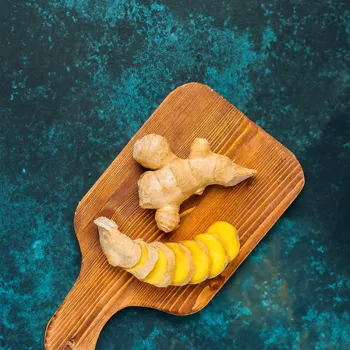
Ginger is often paired with garlic, and the combination is common in Indian cuisine. A cup of adrak chai feels therapeutic.
Asafoetida adds unique depth to vegetarian dishes
Asafoetida, or hing, has a pungent smell that fades into an onion-garlic flavour when cooked. This spice is derived from a resin extracted from the Ferula plant, adds a unique depth to vegetarian dishes. It is particularly useful from a digestive point of view. Hing helps to reduce flatulence.
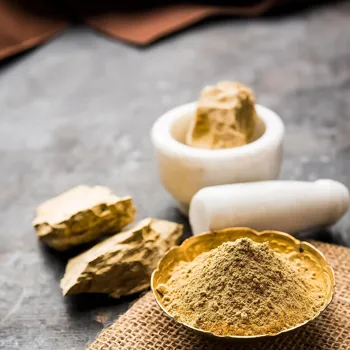
Use a pinch in dals and vegetable curries. It elevates flavour.
Mustard seeds add sharp, nutty flavor to South Indian dishes
Last is mustard seeds. Mustard seeds or rai comes in three colours - black, yellow and white and it has a sharp, nutty, and slightly bitter flavour. Used both whole and powdered. The seeds are often added to hot oil to tempering, where they pop. Elevates south Indian dish flavour.
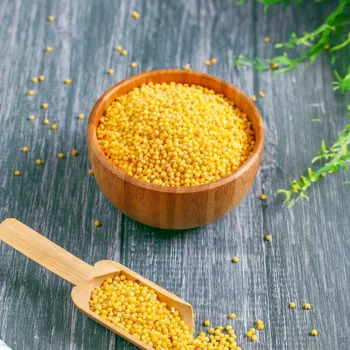
Toolkit for flavor revolution with 10 desi masala for vegetarian cooking
So, there you have it – your toolkit for a flavor revolution! With these 10 desi masala, your vegetarian cooking will never be the same. Experiment, explore, and don't be afraid to get creative in the kitchen. Happy cooking!
AI Generated Content. Glance/InMobi shall have no liability for the content

